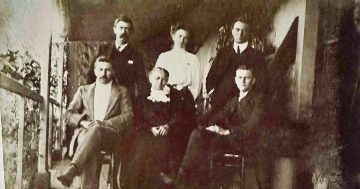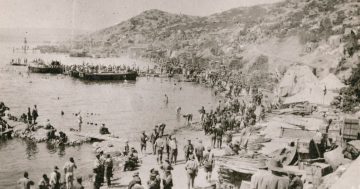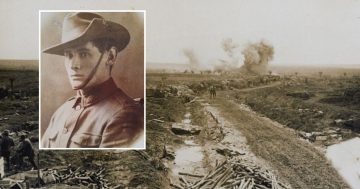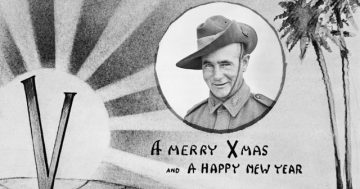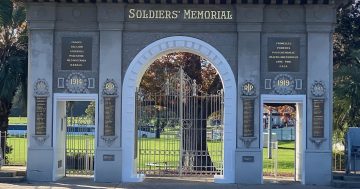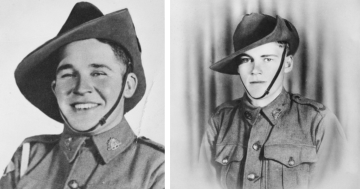
Is the half-billion dollar AWM expansion the best way to commemorate the role of veterans? Photo: Ian Campbell.
Region Media carried a story about 83 distinguished Australians signing a letter opposing the plan to expand the Australian War Memorial in Canberra at a cost of $498m. Since the letter was published, hundreds of people have signed a petition against the extensions project.
Among the signatories to the letter were renowned Australian authors, Richard Flanagan, Thomas Keneally, and Don Watson, leading historians Marilyn Lake, Stuart Macintyre, Mark McKenna, Henry Reynolds, and Clare Wright, three former heads of Australian government departments, two former Australian ambassadors, a former Director and Deputy Director of the War Memorial, and the founding Chair of the International Campaign to Abolish Nuclear Weapons which won the Nobel Peace Prize in 2017. Out of the 83 signatories, 24 have been honoured with awards under the Order of Australia.
The case for the extensions has been promoted vigorously by the Memorial’s Director, Dr Brendan Nelson, following a consultation process conducted behind closed doors in government and which then received feedback from just 134 individuals in its public phase. The plans were unveiled at a lavish media opportunity in Parliament House in November.
The arguments for the extensions are deeply flawed and in part misleading. The Memorial’s own promotional videos show that much of the extra space will be used for a grandiose entry foyer or to ‘park’ decommissioned helicopters and aeroplanes that the Memorial has been bequeathed by the Department of Defence. This includes an F-111 aircraft, a type which has never been used by Australia in conflict.
The Memorial also complains that only a fraction of its holdings can be put on display at any one time. Yet, most museums around the world are able to display only between five and ten per cent of their holdings. The Guggenheim in New York manages to display only about three per cent of its holdings, the Louvre in Paris around eight per cent. The Imperial War Museum in Britain probably displays a larger proportion, but over five separate sites.
It is legitimate to compare the War Memorial with museums because increasingly the Memorial’s display elements overwhelm its role as a memorial. The emphasis on acquiring military ‘kit’ – large toys for the boys – is an example of this. Increasingly, critics of the Memorial have applied terms like ‘Disneyland’ and ‘theme park’ to it.
People have been reluctant to criticise the Memorial, however, for fear of being seen as unpatriotic or disloyal. Of course, the Memorial is ‘sacred’ to some people, but Anzac is not a state religion. Australians are free to be agnostic or atheist about Anzac.
There is much more to Australian history than Anzac and overseas wars, but Dr Nelson, on behalf of the Memorial, persists with the furphy that the Memorial tells ‘our story’. There are, in fact, many Australian stories; even the story the Memorial tells about our overseas wars is incomplete. It concentrates heavily on what Australians have done in war rather than on what war has done to Australia and Australians.
The Memorial has traded on its ‘sacred’ status to achieve better financial outcomes than other national cultural institutions. It has suffered less from the efficiency dividend than have other institutions and it gets an easy run through accountability mechanisms like Senate Estimates and annual reporting. It needs to be held to account more rigorously than it has been.
Today’s veterans suffer homelessness and suicide and mental illness in higher numbers proportionately than the rest of us. There are far better things on which to spend half a billion dollars, such as increased expenditure on mental health services for recent veterans and on help for their families. That would be a practical form of commemoration.
There should be equity between institutions and an end to special deals for the Memorial. Governments – and the people who vote them in – should no longer be taken in by arguments founded on spurious ‘sacredness’ and promoted by skilled spruikers – particularly when the project in question will be a massive and conspicuous legacy for some of them.
As author Don Watson [one of the signatories of the letter] wrote in 2016, ‘That’s the thing about spin – or what goes under the banner today of “communications” – you begin to believe your own bulls***. Spin is the stuff that myths are made of’. Myths overshadow many other parts of our history that deserve examination and, sometimes, celebration. The current campaign aims to push back against a wave of it.
David Stephens is the editor of the Honest History website (honesthistory.net.au)
Original Article published by David Stephens on The RiotACT.







